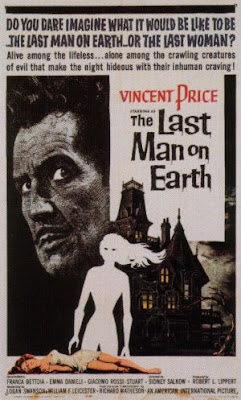Horror Classic 26 of 50: DR. JEKYLL AND MR. HYDE


Today I'm going to do something a little different. This week I watched Dr. Jekyll and Mr. Hyde, a silent film from 1920 which stars John Barrymore (Drew's grandpa!) and is much more classic than most of the movies in my 50-film DVD set, even if it is a total rip-off of The Nutty Professor.
By an incredible coincidence, this was also the week I purchased The Looney Tunes Golden Collection Volume 2, a fantastic DVD set which includes the 1955 Bugs Bunny cartoon Hyde and Hare, which is a slightly sillier take on the Robert Louis Stevenson book. So I'm going to compare the two to see how they... um, compare.
Dr. Jekyll
- In the Barrymore movie, Dr. Jekyll is a selfless philanthropist who loves nothing more than taking care of sick poor people. You know the type -- he makes the rest of us feel guilty for spending our free time watching America's Got Talent instead of volunteering. He often wears a hat.
- In the Bugs Bunny cartoon, Dr. Jekyll is a timid little man (voiced by Mel Blanc) who loves nothing more than feeding rabbits in the park. He wears a hat too.
- The 1920 Jekyll invents a transformation formula because he wants to see if he can separate his evil side from his good side. When he drinks the potion, he jerks and spasms and falls down, in an impressive, extended performance from Barrymore that must have given him a headache.
- The animated Jekyll brings Bugs Bunny home to be his pet, and initially seems like he'll be the perfect owner... but then he drinks the potion and instantly changes to Mr. Hyde.
- The silent film's Hyde is one ugly dude, and I think he may have gotten uglier as the film progressed and Jekyll lost control. He has long, stringy hair, bad teeth, an elongated head, and gnarled fingers that must make it really hard to shop for gloves.
- The animated Hyde is a green-skinned, yellow-eyed, long-armed monster, although it should be noted that the other Hyde may have had green skin and yellow eyes too... We just can't tell because the film is in black and white.
- Silent Hyde roughs up some women, tramples a kid, causes Jekyll to neglect his fiancee, and kills Jekyll's future father-in-law. He's a pretty bad dude, and Jekyll finds it increasingly hard to exert control over him.
- Animated Hyde chases Bugs Bunny around a lot. He's not quite as horrible, and he does pretty well as long as he stays away from the evil-flavored Kool-Aid.
- Jekyll, no longer able to reign in the purely evil Hyde, takes his own life by swallowing poison.
- Jekyll decides to get rid of his formula, which is a far less drastic solution, but someone has already drunk it all. Bugs Bunny denies any culpability.

Themes
- Dr. Jekyll and Mr. Hyde: The inherent dual nature of man, the meaning of evil, sin and its consequences
- Hyde and Hare: Talking rabbits
- Dr. Jekyll and Mr. Hyde is a pretty good film. As with the female lead in Metropolis, John Barrymore does a fine job at portraying two characters without the benefit of spoken dialogue. The script kept most of the best ideas from the book while making a few changes for dramatic purposes. The makeup effects were impressive for their time. Although the pacing dragged at times, this movie was much easier to watch than most of the talkies I've screened for this blog.
- Hyde and Hare is really not one of the better Bugs Bunny cartoons. I mean, there are really no bad Bugs Bunny cartoons from that era, but Hyde is not representative of the character's best. Bugs is at his best when he has a real adversary to match wits with and ultimately get the better of, and that just doesn't happen here. Instead, it's just a series of sequences in which Jekyll turns into Hyde, Bugs freaks out, and Hyde turns back into Jekyll. The Liberace joke was okay, though. I wonder why the 1920 film didn't have any Liberace jokes.
Letter grade for Hyde and Hare: B-
Next film in the 50-movie set: Bluebeard. I hope it's in color, so I can see his blue beard.



Comments